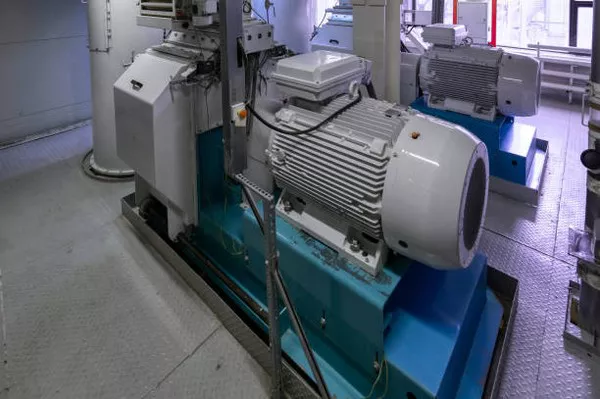Electricity is the lifeblood of modern society, powering our homes, industries, and technological advancements. At the heart of the electricity generation process lies a fascinating piece of engineering marvel – the electric generator. This article aims to provide a comprehensive understanding of how electric generators work, unraveling the intricate mechanisms that transform mechanical energy into electrical power.
Basic Principles of Electric Generation
Electric generators operate on the fundamental principle of electromagnetic induction, a concept discovered by Michael Faraday in the early 19th century. According to Faraday’s law, a change in magnetic field within a closed loop of wire induces an electromotive force (EMF) or voltage in the wire. This phenomenon forms the basis of electric generation.
Components of an Electric Generator
Rotor (Armature): The rotor, also known as the armature, is a crucial component of an electric generator. It consists of a coil or winding of wire that is mounted on a shaft. As the rotor rotates within a magnetic field, it generates a changing magnetic flux, inducing an electric current in the coil.
Stator: The stator is a stationary component surrounding the rotor. It typically consists of a set of coils or windings that produce a stable magnetic field when supplied with direct current (DC). This magnetic field remains constant, creating a suitable environment for electromagnetic induction.
Magnetic Field Source: The magnetic field within the generator is usually created by magnets or electromagnetic coils. In some generators, a separate source of electrical power, such as a battery or another generator, is used to energize the stator and establish the magnetic field.
Voltage Regulator: Modern generators often incorporate a voltage regulator to control the output voltage within acceptable limits. This ensures a stable and consistent power supply, which is crucial for the proper functioning of electrical devices.
Working Mechanism
The operation of an electric generator can be broken down into several key steps:
Initiating Rotation: The rotor, connected to an external source of mechanical energy, begins to rotate. This mechanical energy can be sourced from various means, such as steam turbines, gas engines, or hydro turbines.
Inducing Voltage: As the rotor spins within the magnetic field created by the stator, a changing magnetic flux is generated. According to Faraday’s law, this changing flux induces an electromotive force (EMF) in the coil of the rotor.
AC or DC Output: The induced voltage in the rotor’s coil is typically alternating current (AC). However, direct current (DC) generators also exist, especially in applications requiring a continuous and unidirectional flow of electrical power.
Rectification (for DC generators): In the case of DC generators, the output is rectified to convert the alternating current into direct current. This is achieved using a device called a commutator, which ensures that the current flows in one direction.
Voltage Regulation: The voltage regulator monitors the output voltage and adjusts the field current in the stator to maintain a stable voltage level. This is crucial for preventing fluctuations that could damage connected electrical devices.
Applications of Electric Generators
Electric generators find widespread use across various industries and applications, contributing significantly to the global power infrastructure. Here are some key areas where generators play a crucial role:
Power Plants: Electric generators are integral components of power plants, where they are coupled with steam turbines, gas turbines, or hydro turbines to convert mechanical energy into electricity on a large scale.
Backup Power Systems: Generators serve as backup power sources in critical facilities such as hospitals, data centers, and emergency services. In the event of a grid failure, these generators ensure a continuous power supply.
Renewable Energy: Electric generators are utilized in renewable energy systems, such as wind turbines and solar power plants. In these applications, the generators convert the mechanical energy from wind or solar into electricity.
Transportation: Electric generators are used in various transportation systems, including trains and electric vehicles, to convert mechanical energy into electrical energy for propulsion and auxiliary systems.
See Also: Exploring the Limits: How Long Can a Generac Generator Run?
Conclusion
The electric generator stands as a testament to the ingenuity of human engineering, playing a vital role in meeting the ever-growing demand for electricity. Understanding the principles and mechanisms behind electric generators is essential for appreciating their significance in powering our modern world. As technology advances, generators continue to evolve, contributing to a more sustainable and efficient energy landscape.

